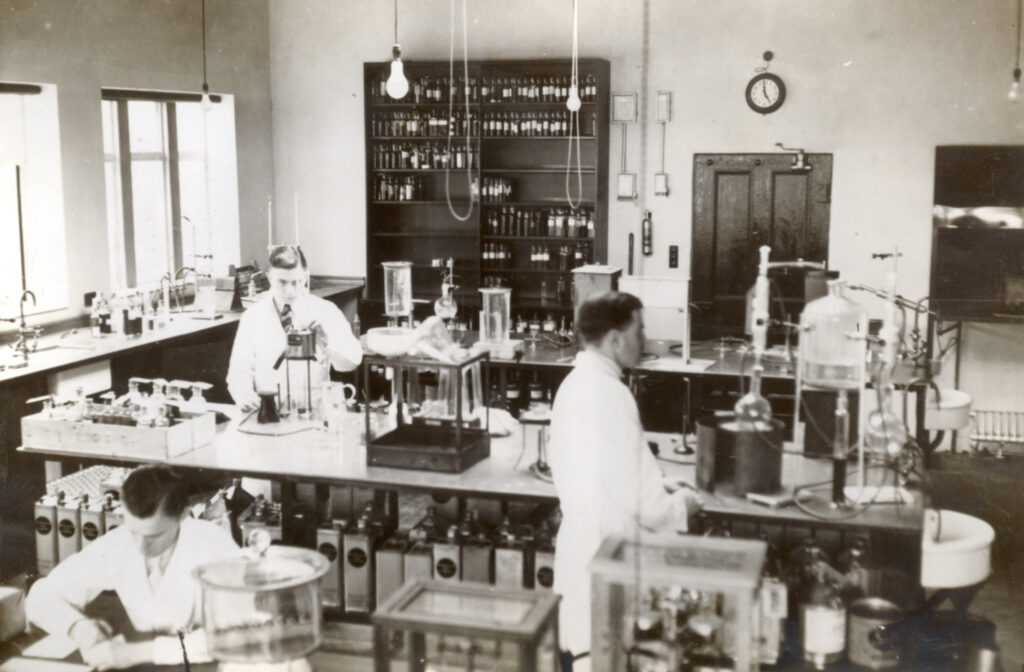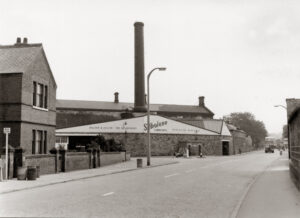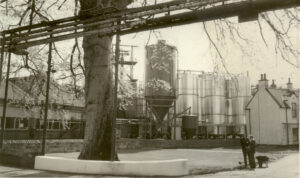b18

This is part of a heritage trail around Belper, taking in some of the key historic areas, and talking about some of the people involved in the development of the town. You can find a map of the trail, and information on where to find interpretation boards containing more details on the town and its history at www.derwentvalleymills.org/belper.
Dalton and Co (Silkolene)
 Dalton & Co Ltd was founded in 1908 by William H Dalton, at premises on Strutt Street, Belper. He began by manufacturing veterinary, agricultural and automotive lubricants. In 1934 the company had grown sufficiently that main operations moved to a site on Derby Road.
Dalton & Co Ltd was founded in 1908 by William H Dalton, at premises on Strutt Street, Belper. He began by manufacturing veterinary, agricultural and automotive lubricants. In 1934 the company had grown sufficiently that main operations moved to a site on Derby Road.
During the Second World War, Dalton’s developed a re-refining process which enabled them to create substantially larger quantities of fuel from crude oil. In all, twenty million gallons of used engine oils were re-refined for the Royal Air Force and Royal Navy, helping their limited supplies to go much further.
 Dalton’s were first in the UK to manufacture pharmaceutical jellies in the UK. The ‘Silkolene’ name was Dalton’s range of petroleum jellies, launched in 1962.The company became known by this name, recognising its success and familiarity with the public.
Dalton’s were first in the UK to manufacture pharmaceutical jellies in the UK. The ‘Silkolene’ name was Dalton’s range of petroleum jellies, launched in 1962.The company became known by this name, recognising its success and familiarity with the public.
Before Dalton’s
This site was home to the Ward’s Hosiery Company, one of the UK’s leading hosiery producers in the 19th century. A partnership with George Brettle ended in 1834, with Brettle’s business moving to Chapel Street and Ward, Sturt and Sharp remaining here. The firm exhibited its goods at the Great Exhibition in 1851 “including silk hose, ladies cuffs, gloves, tartan and other socks and fancy stockings and drawers”. Some of their embroidered stockings fetched 24 shillings a pair, according to the Leicester Journal of July 1851. They went through a number of name changes, but eventually went into liquidation in 1930, putting 470 people out of work. The main site was then used from 1934 by Dalton’s as an oil refinery.
After Dalton’s
German company Fuchs bought Dalton’s out in 1989, and closed the Belper site in June 2000. The 1850 warehouse, attached stables and nearby Brook Cottage survive from Ward’s time on the site, which was mostly redeveloped for housing from 2004. In 2022, the Ward’s warehouse was converted into flats and renamed.

